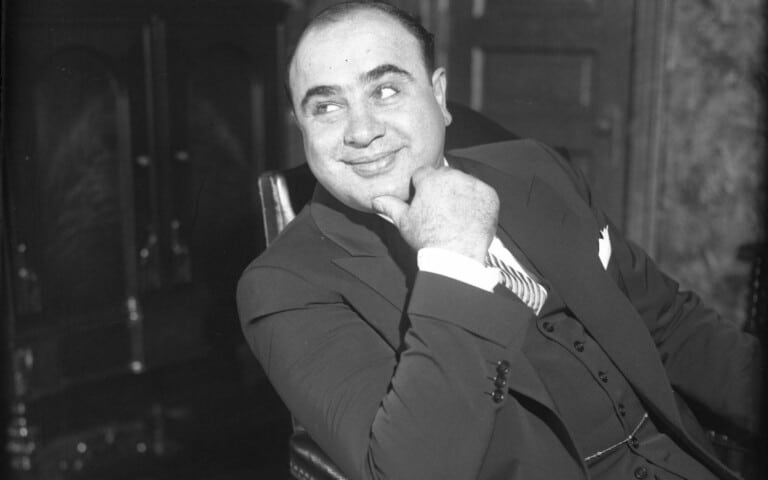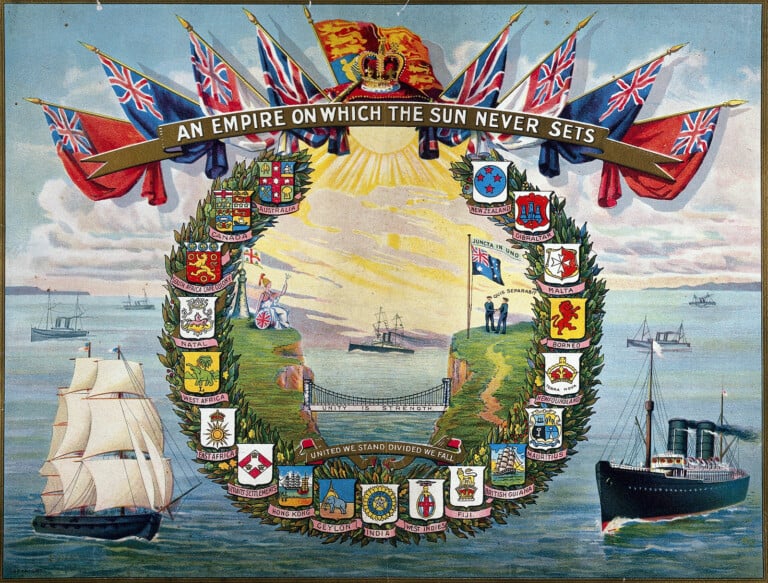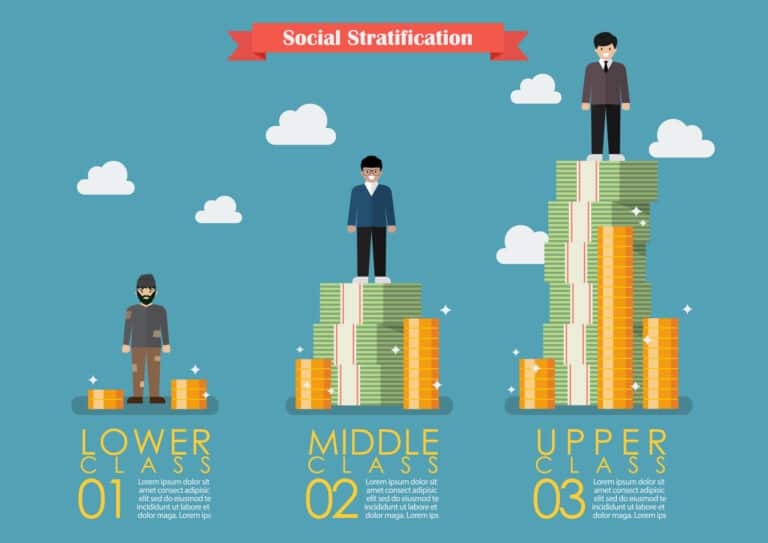Introduction
Max Weber (1864-1920), sociologue allemand, a écrit l’Ethique Protestante et l’Esprit du Capitalisme en 1905 et a essayé d’expliquer le sens profond du passage d’une société traditionnelle à une société moderne.
Il s’interroge sur les origines du capitalisme, la rationalisation des activités économiques et sociales et la bureaucratie. Le Protestantisme est pour Weber lié à l’esprit du capitalisme.
[toc]
I – La rationalisation des sociétés occidentales selon Weber
A – Rationalité?
Calcul, objectif, contraintes : adaptation des moyens aux fins. Dans les sociétés modernes on accorde de l’importance :
- aux calculs
- aux prévisions
- aux méthodes rigoureuses
- aux techniques de gestion
- le droit codifie les relations
- la loi définit les principes généraux
Weber distingue 2 types de rationalité :
la rationalité par rapport aux fins
exemple : une entreprise a un objectif ( le profit), elle va faire des calculs et s’adapter au contraintes (concurrence).
la rationalité par rapport aux valeurs
exemple : l’éthique protestante
Chaque individu est marqué par des manières de faire et de penser : les hommes ont un éthos. Le capitalisme est avant tout la rationalité appliquée à l’économie (mode de pensée particulier).
B – Rationalisation ?
La rationalisation est un processus des sociétés occidentales qui prône l’extension de la rationalité à l’ensemble du monde social :
- l’entreprise : taylorisme, techniques de gestion
- les administrations : bureaucratie
- la vie politique
- l’organisation syndicale
Les sociétés modernes sont donc des sociétés rationnelles désenchantées car elles accordent peu d’importance aux croyances, au sacré, aux mythes et au surnaturel.
La rationalisation est le thème central de son interprétation de la société moderne.
C – Les différents types d’action
Weber distingue 4 types d’action.
L’action rationnelle par rapport à un but : l’acteur conçoit clairement le but et combine les moyens en vue d’atteindre celui-ci.
L’action rationnelle par rapport à une valeur : l’acteur accepte tous les risques, non pour obtenir un résultat extrinsèque mais pour rester fidèle à l’idée qu’il se fait de l’honneur.
L’action affective : est dictée immédiatement par l’état de conscience ou par l’humeur du sujet. L’action est définie non pas par référence à un but mais par la réaction émotionnelle de l’acteur placé dans les circonstances données.
L’action traditionnelle : est dictée par des habitudes, des coutumes, des croyances. L’acteur n’a besoin ni de se représenter un but, ni de concevoir une valeur, ni d’être animé par une émotion : il obéit simplement aux réflexes enracinés par une longue pratique.
Les critères utilisés pour bâtir cette typologie sont l’existence ou l’absence de signification donnée par l’acteur à son action.
Pour le sociologue, l’action par rapport à un but et l’action par rapport à une valeur sont les plus intéressantes car elles sont rationnelles.
D – Les 3 formes de domination
1 – Le pouvoir légitime
Le pouvoir légitime est le pouvoir auquel on consent et que l’on ne conteste pas dans son principe. Il existe 3 raisons qui justifient la domination. Selon Weber, il existe 3 types de pouvoir fondés chacun sur une légitimité différente.
2 – Les 3 formes de domination
La domination traditionnelle : (dans les sociétés traditionnelles) : par les habitudes, croyances aux traditions, on obéit à des personnes d’un rang différent (patriarche, seigneur).
La domination charismatique : repose sur la personnalité, les qualités, la confiance d’une personne (prophète, souverain). Jésus et Hitler sont des chefs charismatiques. La seule qualité du chef charismatique est la compétence à persuader ceux dont il cherche à obtenir l’obéissance qu’il possède un ou plusieurs dons extraordinaires.
La domination légale rationnelle : fondée sur la loi, la légalité. Pouvoir dû à des règles établies rationnellement (gouvernement, fonctionnaires). La bureaucratie est l’acceptation de la loi et du droit.
Pour Weber, la bureaucratie représente le mode de fonctionnement des sociétés modernes (processus de rationalisation).
Ceux qui exercent cette domination doivent faire preuve de neutralité : ce sont des agents spécialisés qui agissent de manière impersonnelle. Ils sont nommés par concours et Weber affirme que la bureaucratie n’existe pas que dans l’administration mais aussi dans les grandes entreprises, les partis politiques et les organisations syndicales.
C’est pour Weber la forme d’organisation la plus efficace quant à ses résultats car elle est rationnelle. Elle caractérise les sociétés modernes.
II – Protestantisme et esprit du capitalisme
A – La thèse de Weber
Economie et religion sont deux thèmes étudiés par Weber dans son ouvrage l’Ethique protestante et l’esprit du capitalisme en 1905 et dans lequel il cherche à étudier l’influence que peut avoir la religion dans l’économie.
Weber veut prouver que l’ascétisme préconisé par les protestants entre le 16ème et le 18ème siècle a favorisé l’essor du capitalisme en Angleterre.
La religion protestante produit une certaine éthique et l’intériorisation de cette éthique conduit à un certain éthos.
Weber s’intéresse plus particulièrement au protestantisme puritain (calvinisme). Il existe donc une relation entre religion et changement social. En mettant en pratique cet éthos, les individus ont adapté des comportements favorables à l’essor du capitalisme.
B – Explications
1 – la rationalisation et l’ascétisme religieux
Les protestants doivent avoir une conduite rationnelle :
- but : accéder au salut éternel
- rationalité par rapport à une valeur
- moyen : en menant une vie ascétique rationalisée
2 – la prédestination
Calvin a introduit l’idée de prédestination : le calviniste ne peut savoir s’il sera sauvé ou damné ; de Dieu seul dépend le salut au-delà de la mort.
Pour les catholiques, c’est en fonction de leurs actions qu’ils seront sauvés ou non. Pour les calvinistes, leur conduite sur Terre ne change rien : le protestant est prédestiné. Il faut cependant que sa conduite ne soit pas immorale.
Suis-je un élu ? Le travail sans relâche dans un métier est le meilleur moyen pour dissiper le doute religieux. Le calviniste doit mener une vie laborieuse et austère : la prospérité de ses affaires est le signe de l’élection divine. L’ascétisme protestant est donc l’esprit du capitalisme car deux rationalités sont liées :
- la rationalité par rapport à une valeur : éthique protestante
- la rationalité par rapport à un but (économiste) : esprit du capitalisme
3 – la valorisation du travail
Le travail est une forme d’ascèse qui permet de se rapprocher de Dieu, d’éviter de trop s’adonner au plaisir et de ne pas gaspiller son temps.
4 – le métier : une vocation
Le métier a une connotation religieuse de vocation : c’est Dieu qui appelle chaque homme à exercer une activité professionnelle. Ce concept à connotation religieuse valorise l’activité lucrative capitaliste : il s’agit d’une rationalité par rapport à une valeur.
Pour un puritain, l’enrichissement n’est pas une fin en soi, il répond simplement à l’appel de Dieu.
5 – l’épargne
L’ascétisme puritain freine la consommation lorsqu’elle porte sur le superflu et l’ostentatoire. Si la consommation baisse alors l’épargne augmente, de même que l’investissement (E = I).
L’ascétisme protestant a contribué à développer l’esprit du capitalisme : l’enrichissement est un signe que le protestant est promis au salut éternel.
III – L’irrationnalité de certains Pays En Développement (PED)
Les blocages culturels sont souvent évoqués pour expliquer la stagnation de certains PED qui sont encore sous l’emprise d’une pensée magique, irrationnelle ou issue de la tradition. Ils n’ont pas la rationalité nécessaire au développement dans leur culture.
Les modèles de développement capitalistes sont le travail, l’investissement, la recherche du profit, la productivité…
IV – Les Pays En Développement et la bureaucratie
Les dominations importantes dans les PED sont traditionnelles et charismatiques. Or le modèle des pays développés est la domination légale-rationnelle (bureaucratique).
La bureaucratie existe aussi dans les PED mais elle fonctionne sur un modèle clientéliste. L’existence d’une bureaucratie pléthorique est coûteuse pour des pays aux budgets limités.
Le clientélisme est la pratique qui consiste pour le détenteur d’un pouvoir à favoriser des personnes ou groupe de personnes (clientèle) au détriment des autres en échange de la garantie de conserver un pouvoir. Exemple : attribution des postes administratifs en fonction du clientélisme et non du mérite (non rationnel).






